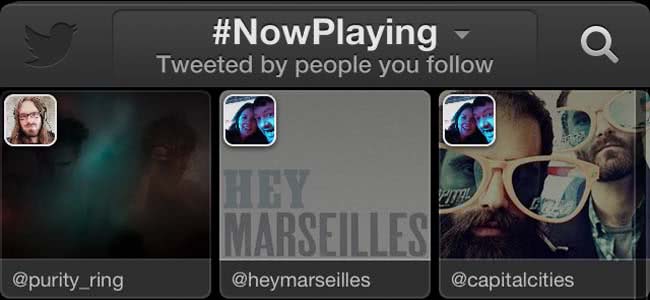The creators of #tweeting, #hashtags and #trending have ironically failed to make themselves trend.
Launched last month, music streaming-discovery service Twitter #Music was rightfully hyped as a possible rival to the likes of Spotify and Pandora. A month on from its launch however, the service has slipped from the top 100 free music apps on the App Store with people apparently caring more about something called “VirtualDJ Home” than they do about Twitter #Music.
Twitter followed what was a seemingly fool-proof plan: use groundbreaking software from Aussie-born music site We Are Hunted, repackage it with Twitter branding, generate interest with an exclusive trial period, get Ryan Seacrest to tweet about it, and then finally throw it out to their massive and continuously expanding user base.
Now analysts are trying to pinpoint Twitter #Music’s Achilles’ heel – with so much promise, questions are being asked about its current performance against the projections being made during its hyped build-up.
The blame can’t be completely shoved onto the software itself. Twitter #Music boasts a user-friendly, sleekly designed interface. It works from one central menu that allows users to easily shift between different chart categories with a single click. It’s big, bold and has the minimalist aesthetic of a cool Swedish artist. Basically, it looks nice and feels new.
Another positive is that the categories themselves are extensive and cover everything you’d need. The “Superstar” and “Popular” charts allow users to peer at what’s dominating the mainstream, while there are specific genre-dedicated charts for those who are a bit fussier. The “Suggested” tab is tailored from user activity to create recommendations with a surprisingly good success rate, and #NowPlaying allows you to inspect what everyone you follow has been listening to. Now analysts are trying to pinpoint Twitter #Music’s Achilles’ heel – with so much promise, questions are being asked about its current performance against the projections being made during its hyped build-up.
One common complaint of the service, is following someone on Twitter #Music also means following them on the user’s Twitter account – the two aren’t mutually exclusive. So to make the most of the music discovery functionality of the mobile app means potentially having to endure a torrent of endless tour-promoting tweets in your Twitter feed. The more artists, the more tweets, and no strict way to filter the separation between the two.
The major flaw of Twitter’s music service is that it falls flat on the streaming side. Songs can’t be played in full but instead listeners have to settle for a 30 second preview which feels incredibly old-fashioned in this post-Spotify world. This problem can be avoided if users link up their premium Rdio or Spotify subscription account, but this is made redundant when people can just stream straight through those services with little incentive to do it through Twitter #Music instead.
Another obvious reason for its so-called #flop is that the music streaming world is already incredibly competitive, crowded, and congested to begin with.
Perhaps there was never room in town for another service when the likes of Spotify, Pandora, Rdio, Last.FM and even YouTube have already established themselves as go-to places to find and stream music. Not to mention Google’s entry into the music streaming battle field, Google Play, which launched last week. Its fate is still yet to be decided.
Furthermore, Twitter hasn’t been able to effectively harness its 200 million monthly users. Despite the fact Tweeters don’t need to make a separate account to use Twitter #Music, there are no links to the service from the Twitter home page. So, rather than tweeting about their latest and greatest musical finds from the mobile app, people are continuing to use links from SoundCloud and YouTube. It’s a primary source of site traffic that is currently going begging. It’s not a groundbreaking revelation, but if people don’t know something is there, they won’t use it.
Even if Twitter #Music hasn’t met its lofty expectations, it’s not the end of the world for the social networking giant. As The Verge argues, Twitter’s musical blunder “was a cheap one… a one-inch punch that [they] could toss into the world and let succeed or fail on its own terms.” As they rightly suggest, “it’s the kind of thing giants like Google and Facebook do all the time, but Twitter has only recently come around to.”
There’s still light at the end of the tunnel. The Internet moves fast and just as quickly as some people have forgotten about Twitter #Music, people will forget about its disappointing numbers. It also needs to be remembered that this service is still incredibly young. At one month old, it might simply need more time to smooth out its kinks and learn to walk before it can run alongside the likes of Spotify.

































